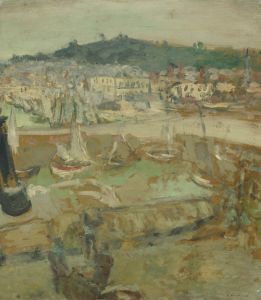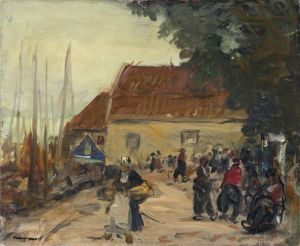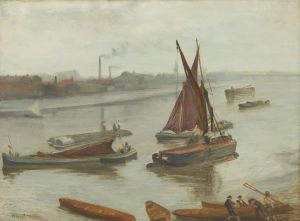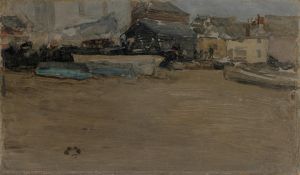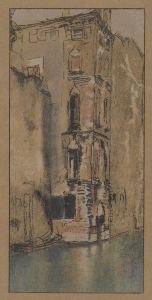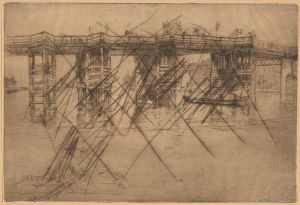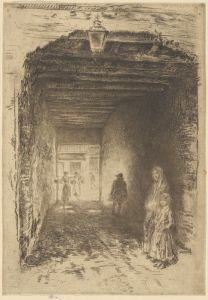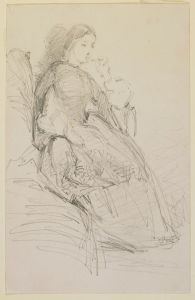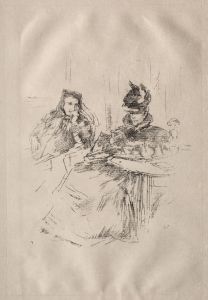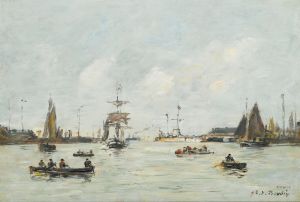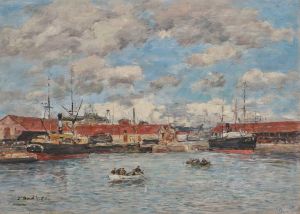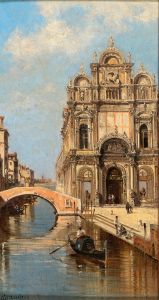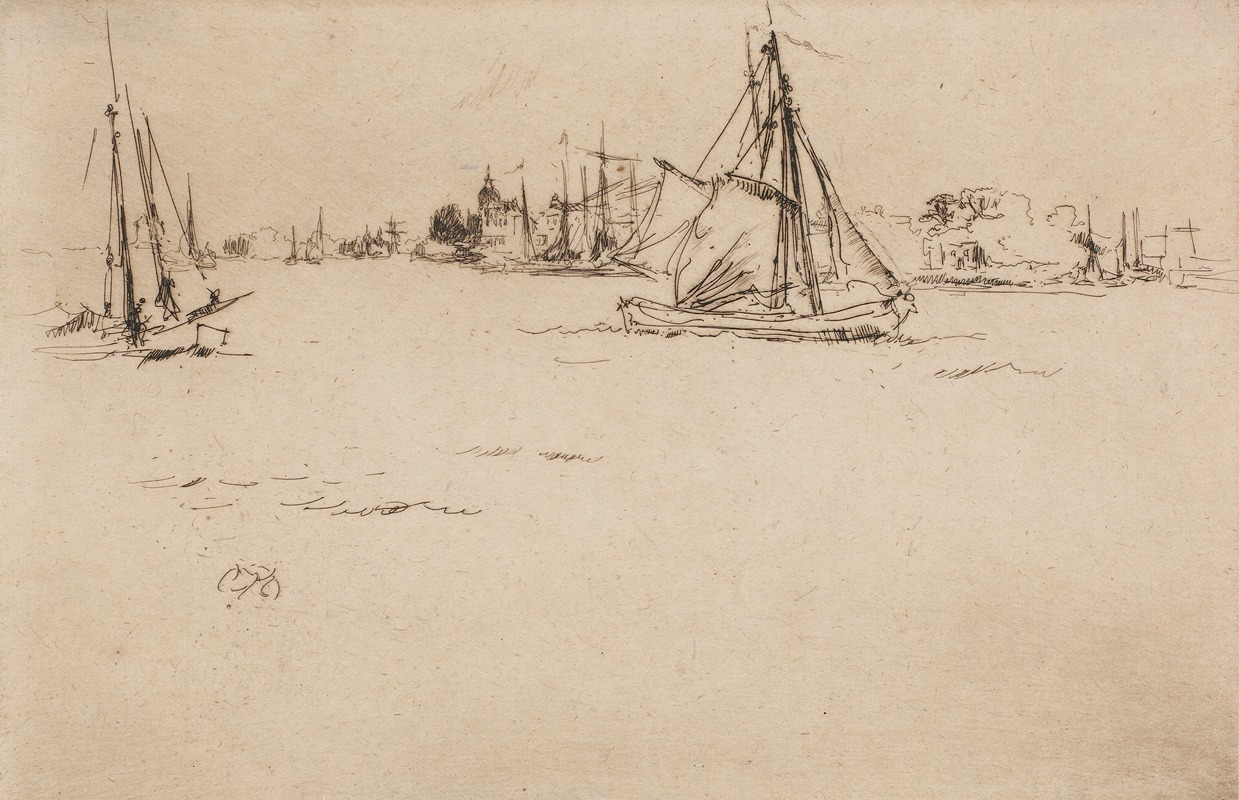
Dordrecht
A hand-painted replica of James Abbott McNeill Whistler’s masterpiece Dordrecht, meticulously crafted by professional artists to capture the true essence of the original. Each piece is created with museum-quality canvas and rare mineral pigments, carefully painted by experienced artists with delicate brushstrokes and rich, layered colors to perfectly recreate the texture of the original artwork. Unlike machine-printed reproductions, this hand-painted version brings the painting to life, infused with the artist’s emotions and skill in every stroke. Whether for personal collection or home decoration, it instantly elevates the artistic atmosphere of any space.
James Abbott McNeill Whistler was an American artist known for his paintings and etchings, and he played a significant role in the aesthetic movement. One of his works, "Dordrecht," is an etching that reflects his interest in capturing the essence of a place through his art. Whistler's etching of Dordrecht is part of his larger body of work that includes depictions of various European cities, particularly those in the Netherlands and France.
"Dordrecht" was created during Whistler's travels in Europe, a period when he was deeply influenced by the landscapes and cityscapes he encountered. The etching showcases Whistler's skill in capturing the intricate details of urban environments, as well as his ability to convey atmosphere and mood through his use of line and composition. Whistler's etchings are often noted for their precision and delicacy, and "Dordrecht" is no exception.
The city of Dordrecht, located in the Netherlands, is known for its rich history and picturesque canals. Whistler's depiction of Dordrecht likely focuses on the architectural and natural beauty of the city, capturing the interplay of light and shadow on its historic buildings and waterways. This attention to detail and atmosphere is characteristic of Whistler's work, as he often sought to evoke a sense of place and time in his art.
Whistler's etchings were highly regarded during his lifetime, and he was considered a master of the medium. His work in etching was influenced by earlier artists such as Rembrandt, and he brought a modern sensibility to the technique, emphasizing mood and tonal harmony over strict realism. "Dordrecht" fits within this context, as it reflects Whistler's interest in creating evocative images that transcend mere representation.
The etching of Dordrecht is part of Whistler's broader exploration of European cities, which he approached with a keen eye for detail and a sensitivity to the unique character of each location. His work often blurs the line between painting and printmaking, as he applied similar aesthetic principles to both mediums. Whistler's etchings, including "Dordrecht," are characterized by their subtlety and refinement, qualities that have contributed to his lasting reputation as an important figure in the art world.
Whistler's influence extended beyond his own work, as he was a central figure in the aesthetic movement, which emphasized beauty and art for art's sake. His approach to art was innovative for its time, and his etchings continue to be studied and admired for their technical skill and artistic vision. "Dordrecht" is a testament to Whistler's ability to capture the spirit of a place through his art, and it remains an important example of his contribution to the field of etching.
In summary, James Abbott McNeill Whistler's "Dordrecht" is an etching that exemplifies his mastery of the medium and his ability to convey the essence of a location. Through his detailed and atmospheric depiction of the city, Whistler captures the unique charm of Dordrecht, reflecting his broader interest in European landscapes and cityscapes. His work continues to be celebrated for its artistic innovation and enduring beauty.





